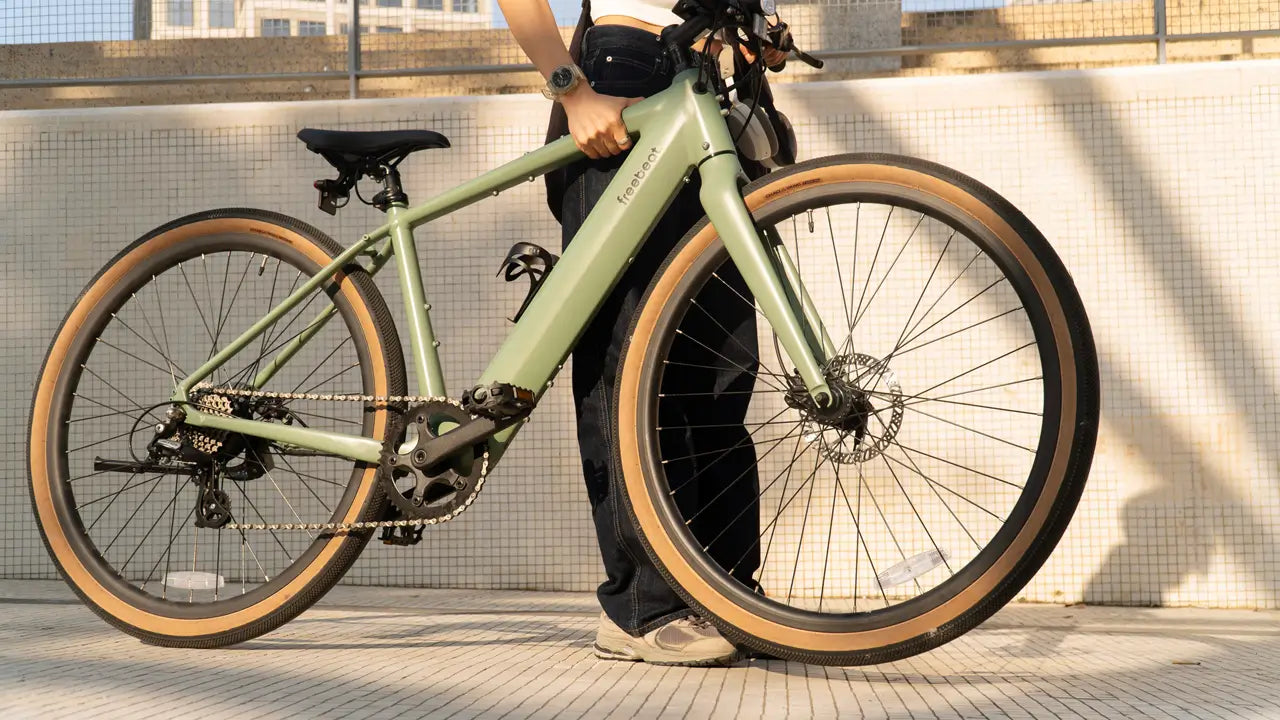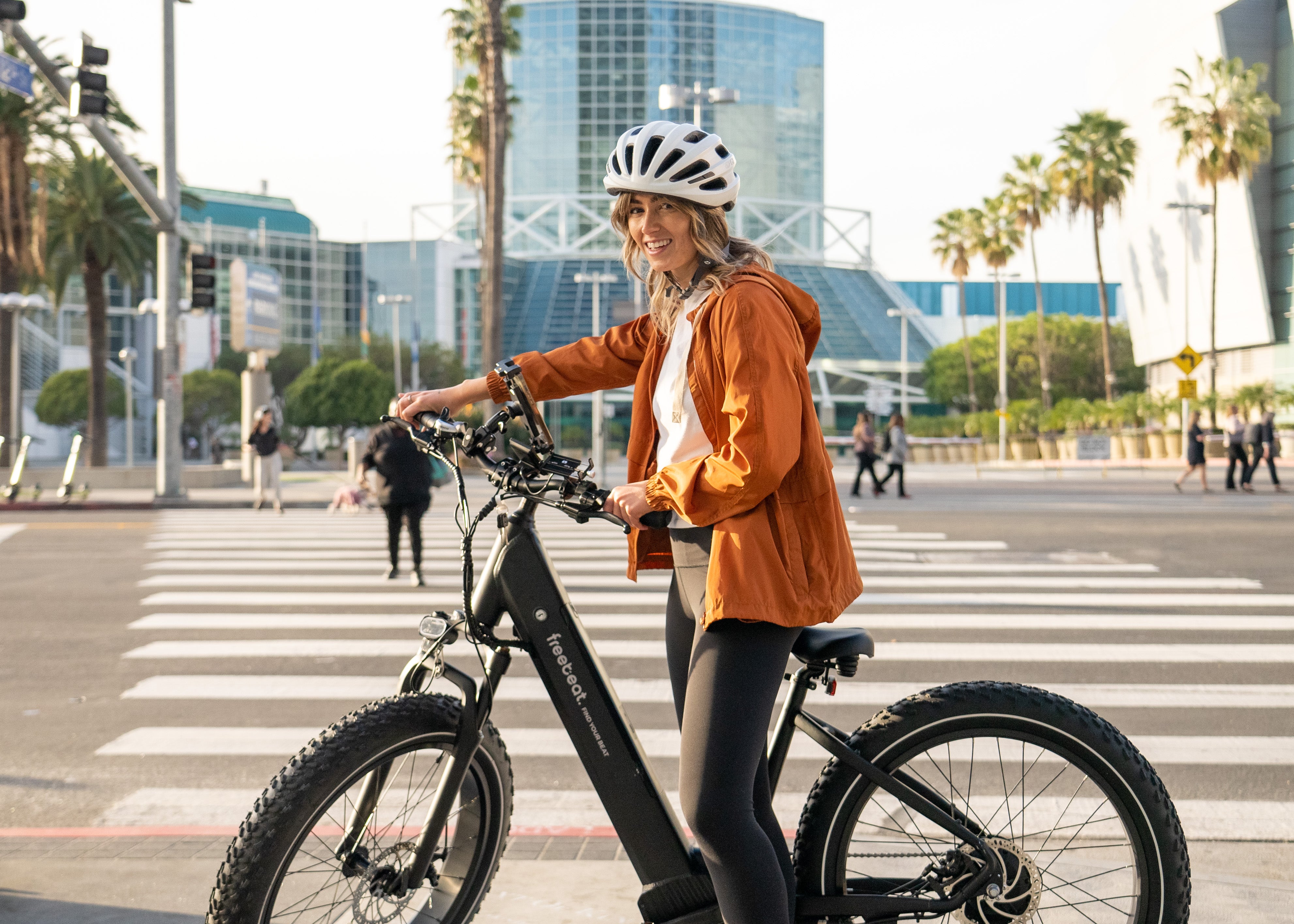Charge Up Your Ride: A Guide to Batteries for Electric Bikes
The Core of Electric Bike Battery Power
Central to every e-bike, is a battery for an electric bike. Powered by an electric motor that draws energy from the battery, these bikes assist with pedaling. The most common types of batteries are lithium-ion and lead-acid batteries, chosen for their energy density and durability.

Lithium-Ion Batteries for Electric Bikes
Lithium-ion batteries are the most common type used in e-bikes, such as the freebeat MorphRover, due to their high energy-to-weight ratio and low self-discharge rate. This means they pack a lot of power in a relatively small size, making them ideal for electric bikes. They also have a long lifespan and can handle hundreds of charge cycles before needing a replacement. However, they are more expensive than lead-acid batteries but offer better performance and longevity.
Lead-Acid Batteries in Electric Bikes
Lead-acid batteries are the older and cheaper option for e-bikes. They have been used in various applications for decades, including automotive vehicles. While not as energy-dense as lithium-ion batteries, lead-acid batteries are still a popular choice for budget-friendly e-bikes. They do, however, have a shorter lifespan and require more frequent charging.
Advanced Insights into Electric Bike Battery Technology
E-bike batteries come in various types, but their function is to store and provide energy for the bike's electric motor. The most common types are Lithium-Ion (Li-Ion) and Lithium Polymer (LiPo) batteries, prized for their high energy-to-weight ratios and relative long-life cycles. Each battery is comprised of cells, which are the building blocks of the battery pack's voltage and capacity. From 7 to 21 Ah and up, the capacities of e-bike batteries vary, influencing factors such as range and performance.
Matching Electric Bike Batteries to Your Riding Needs
The watt-hours (Wh) calculation, found by multiplying the voltage and ampere-hours, indicates the energy capacity of the battery. This figure is crucial to matching the e-bike to your needs. Commuters might need a battery with 400Wh, whereas a trail-hopping enthusiast would likely benefit from 500Wh or more. Higher Wh translates to longer rides between charges.
How to Take Care of Your Electric Bike Battery
Best Practices for Charging Electric Bike Batteries
Proper care of your e-bike battery begins with the right charging habits. Unlike the 'memory effect' found in older nickel-cadmium batteries, Li-Ion and LiPo batteries perform better with shallow charges and avoiding deep discharges. A full discharge can stress the cells and lead to a reduced lifespan. Similarly, overcharging, such as leaving the battery plugged in for too long after it's fully charged, can also degrade the battery.

Temperature Management for Electric Bike Batteries
Extreme temperatures can significantly affect battery performance. Avoid charging or storing your e-bike in very hot or cold environments, as this can reduce battery life. Typically, room temperature is ideal for both charging and storage. In colder climates, consider keeping your battery warm before riding to improve its performance.
Maintaining Your Electric Bike Battery Regularly
Batteries are the backbone of e-bikes, and regular maintenance is crucial for prolonging their lifespan. Ensure that all connections are tight and clean, and check for any signs of wear or damage. If you notice any issues with your battery, such as decreased range or difficulty charging, it may be time for a replacement.
Optimal Usage Tips for Electric Bike Batteries
To maintain the health of your e-bike battery, it's important to keep it charged, even during periods when you're not using the bike. Regular use keeps the electrons flowing, which is beneficial for the longevity of the battery. If you won't be using your e-bike for an extended period, it's recommended to store the battery with a 50% charge and recharge it every few months.
When to Replace Your Electric Bike Battery
Despite proper care, e-bike batteries will eventually need replacement. On average, lithium-ion batteries last between 500-1,000 charge cycles before needing a replacement, while lead-acid batteries may last only 300-500 cycles. Signs that your battery needs to be replaced include a significant decrease in range and difficulty holding a charge. When it's time for a new battery, consult with your e-bike manufacturer or local bike shop to find the best option for your specific model.

Extending the Life of Your Electric Bike Battery
Smart Storage Solutions for Electric Bike Batteries
If you're planning to store your e-bike for an extended period, aim for a charge level of around 60-80%. This mitigates stress on the battery while avoiding a complete charge, which would be harmful, as mentioned earlier. It's also a good idea to check your owner's manual for specific manufacturer recommendations.
Enhancing E-Bike Battery Life with Accessories
There are several accessories that can enhance the life of your e-bike battery. Once such accessory is a battery heating system for cold climates. These systems keep the battery within the optimal operating temperature range, which is especially useful if you're a winter rider. Additionally, installing a battery management system (BMS) can help protect the battery from overcharging and overheating, improving its overall lifespan.
Maximizing Every Charge of Your E-Bike Battery
Eco-Friendly Riding Practices
You can get more mileage from your e-bike by adopting eco-friendly riding practices. Less aggressive acceleration, using lower levels of pedal assist when possible, and pedal-only power on flat terrain are all strategies that can help preserve battery life. Additionally, avoiding steep inclines and rough terrain can also help conserve energy.

Proper Gear Shifting
Another way to maximize your battery's performance is through proper gear shifting. Keeping the bike in a higher gear allows the motor to work more efficiently and use less power. It's essential to pay attention to your e-bike's gearing system and become familiar with how it functions to optimize your battery's performance.
Riding Technology
Some e-bikes come with built-in software that optimizes battery usage. This might mean your e-bike is constantly learning your riding style and the terrain you tackle. If your e-bike has adjustable power modes, these can also be a battery-saver when used wisely. For example, if you know your route has a lot of hills, it's beneficial to save your battery power for those sections and use the lowest power mode on flat terrain.
Troubleshooting Battery Issues
Diagnosing Common Problems
Batteries can sometimes fail or experience issues, and it's essential to know the signs. Common symptoms include decreased range, sudden loss of charge, or a battery that doesn't charge at all. Some problems can be due to charger malfunctions or simple software updates, while others might indicate a failing battery.

Seeking Help for Electric Bike Battery Issues
If your battery is under warranty and you've ruled out simple fixes, it's time to contact the manufacturer or your local e-bike dealer. They can help diagnose the issue and, if necessary, assist with repairs or replacements. It's important to address battery problems promptly to avoid costly repairs or replacements down the line. Remember to always follow proper charging and storage guidelines to maximize the life of your e-bike battery. With proper care, you can enjoy many rides on your e-bike before needing a replacement battery.
Conclusion
Electric bike batteries are the lifeblood of your e-bike experience. By understanding the technology, adopting good care habits, and being mindful of how you use and store your battery, you can ensure it serves you consistently and for the long haul. Remember that the little details, from charging to pedaling, can make a significant difference in the health and performance of your battery. With a charged-up battery, the possibilities for exploration and eco-friendly commuting are virtually endless. So get out there and enjoy the ride!
Additional Resources
For more information on e-bike batteries, charging, and maintenance, check out these resources:
- Electric bike conversion kits 2024: Add a motor to your bike
- Electric bike batteries: everything you need to know






















 0% APR financing for 24-month payments.
0% APR financing for 24-month payments.